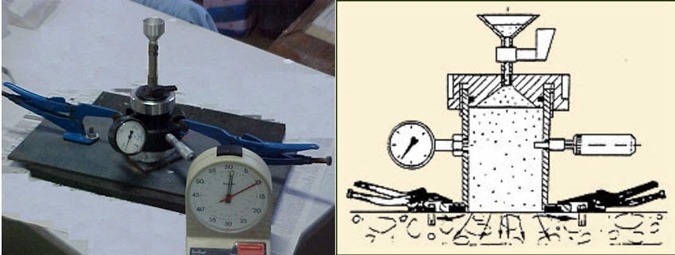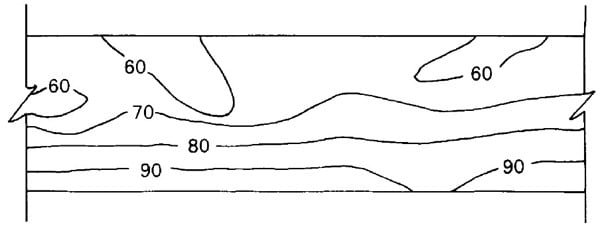Concrete in-situ test results interpretation is important for structural strength assessment. Concrete test results interpretation consists of three stages from which proper conclusion are developed and its applications is discussed.
In this article, different steps of result of concrete in-sit tests are discussed.

Interpretation of Concrete In-Situ Test Results
- Computation of in-situ concrete test results
- Examination of variability of results of in-situ concrete tests
- Calibration and/or application of in-situ concrete test results
Computation of Concrete In-Situ Test Results
Concrete in-situ test methods, which follow clear procedure, affect the amount of computation needed to provide suitable parameters at test locations. For instance, concrete core test should be corrected for length, orientation and reinforcement to yield equivalent cube strength.
Tests on concrete such as penetration resistance, pull out, and surface hardness have to be averaged to obtained mean value. At this stage, only direct measurement properties should be concentrated on and attempts to create correlation with other property other must be avoided.
Chemical and similar tests on concrete is assessed to produce suitable parameters such as cement content or proportions of mixture. Load tests are commonly expressed in the form of load / deflection curves with moments estimated for critical conditions.

Examination of Variability of Concrete In-Situ Test Results
In cases where more than one test results are available, important and valuable information can be obtained by comparing different result. Whenever small numbers of variable results are available, such as in the case of load test, they provide an indication about construction uniformity and consequently the importance of the concrete test results.
However, when large quantity of variable results is obtained for example in non-destructive testing, examining those results can show areas of delaying quality.
This information combined with knowledge of test method variability give a measure of the utilized construction standards and controls. There are numbers of techniques used to examine enormous number of variable results:
Graphical Methods of Concrete Test Results Examination
In graphical methods, contours are used to show details such as areas of equal strength and indicate zones of exceptionally high strength and low strength from other parts of the member. Not only do contours beneficial to strength evaluation but also valuable to reinforcement corrosion and integrity survey. Contours must be created using measured parameter instead of converted ones.
Normally, contours provide well described pattern and anything that do not follow those patterns could be a region that should be paid attention to and concerned about. Figure-1 illustrates contours used to examine variable results of concrete in-situ tests.

Fig.1: Typical Relative Percentage Contours for a Beam
Histogram is another graphical method employed to analyze concrete variability specifically in the case where great number of results are achieved. For example, testing large number of similar members or testing large members. Figure-2 and Figure-3 show typical histograms.

Fig.2: Well-Constructed Member using Uniform Concrete Supply

Fig.3: Poor Construction
Numerical Methods of Concrete Test Results Examination
Coefficient of variation computation may give considerably important information about construction standard used. The coefficient of variation is equal to the standard deviation times 100 divided by mean.
Table-1 provides typical coefficient of variation values pertaining to the principal test methods that is likely to be anticipated for a single site made unit constructed from several batches.
Table-1: Typical coefficient of variation of test results and maximum accuracies of in-situ strength prediction for principal methods
|
Test method |
Typical coefficient of variation for individual member of good quality construction , % |
Best %95 confidence limits on strength estimates |
| Standard cores |
10 |
|
|
Small cores |
15 |
|
| Pull-out |
8 |
|
|
Internal fracture |
16 |
|
|
Pull-off |
8 |
|
|
Break-off |
9 |
|
|
Windsor probe |
4 |
|
|
Ultrasonic pulse velocity |
2.5 |
|
|
Rebound hammer |
4 |
|
Calibration and/or Application of Concrete In-Situ Test Results
The calibration accuracy between measured test results and required properties of concrete is affected by number of factors which could be different for each specific test.
It is significant to focus on laboratory conditions for which calibration curves are created and in-situ test conditions specifically the difference in moisture and maturity conditions.
Concrete quality changes throughout the element and might not necessarily be the same in composition or laboratory condition. Severe weather condition, difficulties of access, and inexperienced operatives could create difficulties and consequently the tests may not be conducted suitably.
It is crucial that application of in-situ concrete test results takes these factors into consideration to determine their significance.







